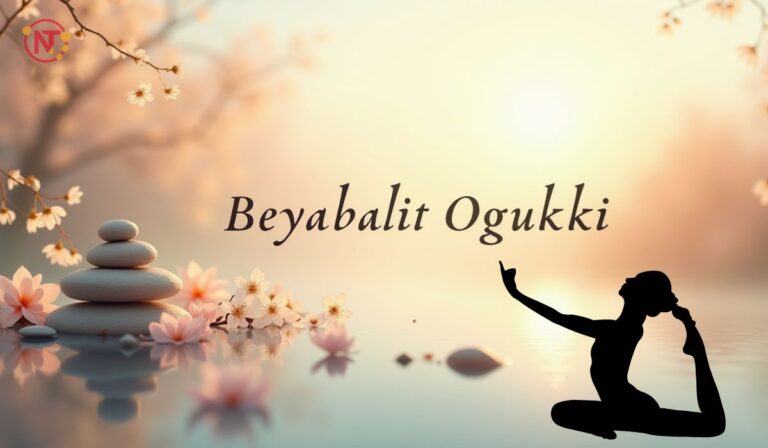Have you ever heard of Beyabalut Ogukki? This intriguing substance is not just a culinary delight but also a fascinating piece of history. Rooted in tradition and culture, Beyabalut Ogukki has captured the attention of food enthusiasts and health-conscious individuals alike. Its unique characteristics set it apart from other ingredients, making it worthy of exploration. Whether you’re curious about its origins or looking for practical uses in your daily life, this blog post will guide you through everything there is to know about Beyabalut Ogukki. Let’s dive into this captivating topic!
What is Beyabalut Ogukki?
Beyabalut Ogukki is a traditional food item celebrated for its distinct flavor and texture. Often described as more than just an ingredient, it embodies cultural significance in various communities.
This unique substance typically consists of fermented grains, which are transformed through age-old methods passed down through generations. The fermentation process not only enhances its taste but also contributes to a rich nutritional profile.
In many regions, Beyabalut Ogukki isn’t merely consumed; it’s often central to festivities and gatherings. Its preparation can vary widely, reflecting local traditions and personal preferences.
What sets Beyabalut Ogukki apart is its versatility; it can be used in savory dishes or sweet treats. Whether enjoyed on its own or incorporated into recipes, it offers a delightful experience that tantalizes the palate.
The Origins of Beyabalut Ogukki
Beyabalut Ogukki has a rich history that traces back to ancient cultures. This traditional dish is deeply rooted in regional customs and practices. Its name reflects its unique ingredients, which are often sourced from local environments.
The preparation methods have been passed down through generations, showcasing the artistry of ancestral cooks. Each community adds its own twist, creating variations that highlight local flavors and traditions.
Historically, Beyabalut Ogukki was more than just sustenance; it played a role in rituals and celebrations. Families would gather to prepare this dish during significant events or seasonal festivities.
As time progressed, this culinary gem maintained its cultural significance while adapting to modern tastes. The connection between past and present remains strong as people continue to share stories about their experiences with Beyabalut Ogukki at communal tables across different regions.
How to Make and Prepare Beyabalut Ogukki
Making Beyabalut Ogukki is a delightful process that begins with selecting the right ingredients. You will need fresh, young leaves from the beyabalut plant, which are known for their vibrant flavor.
Start by washing the leaves thoroughly to remove any dirt. Once clean, chop them finely and set aside. Next, gather spices like turmeric, cumin powder, and salt to enhance the taste.
In a pan over medium heat, warm some oil. Add chopped onions and sauté until they turn golden brown. Then toss in your prepared beyabalut leaves along with the spices. Stir well to combine everything evenly.
Cook for about 10-15 minutes until the leaves wilt down nicely. The aroma will fill your kitchen! Serve hot as a side dish or mix it into rice or bread for a complete meal experience that showcases this traditional gem beautifully.
The Purpose of Beyabalut Ogukki in Traditional Cultures
Beyabalut Ogukki holds a significant place in various traditional cultures. Its purpose often transcends mere consumption, embodying deep-rooted rituals and community bonding.
In many societies, this unique dish is prepared during festivals or important gatherings. It symbolizes unity among families and friends, fostering connections that are vital for cultural preservation.
The preparation process itself can be a communal activity. Generations come together to share techniques handed down through ages. This collaboration not only enhances the dish but also strengthens familial ties.
Moreover, Beyabalut Ogukki serves as an expression of identity. Each region may have its variations, reflecting local ingredients and customs. This diversity showcases the richness of cultural heritage while keeping traditions alive for future generations.
Practical Uses for Beyabalut Ogukki Today
Beyabalut ogukki has found its way into modern kitchens, appreciated for its versatility. Home cooks use it as a base for soups and stews, adding depth to flavors with minimal effort.
In the realm of baking, this ingredient can enhance bread recipes, providing a unique texture and nutrition boost. Bakers often experiment with various ratios to achieve desired results.
Health enthusiasts incorporate beyabalut ogukki in smoothies or energy bars. Its nutrient-rich profile makes it an excellent choice for those seeking wholesome snacks that satisfy cravings without guilt.
Beyond culinary uses, beyabalut ogukki serves as a natural thickening agent in sauces and dressings. Chefs value its ability to create creamy textures without relying on dairy products.
Crafting homemade beauty treatments is another popular trend. Many people utilize this ingredient in face masks due to its skin-nourishing properties, promoting hydration and radiance naturally.
Health Benefits of Consuming Beyabalut Ogukki
Beyabalut Ogukki offers a range of health benefits that can enhance your well-being. This traditional food is rich in essential nutrients, making it an excellent addition to any diet.
Packed with vitamins and minerals, Beyabalut Ogukki supports immune function. Regular consumption may help protect against common illnesses.
Another advantage lies in its fiber content. High fiber intake aids digestion and promotes gut health. It can also contribute to feeling fuller for longer, which is beneficial for weight management.
Additionally, antioxidants found in Beyabalut Ogukki combat oxidative stress in the body. This property helps reduce inflammation and supports overall cellular health.
Including this unique dish in meals not only introduces diverse flavors but also boosts nutritional value significantly. Embracing Beyabalut Ogukki could be a delicious step toward better health choices.
Conclusion
Beyabalut Ogukki holds a unique place in cultural traditions and modern practices alike. Its rich history, rooted in ancient customs, showcases the importance of this remarkable substance. As we’ve explored its origins and traditional uses, it becomes clear how deeply intertwined it is with community identity.
Crafting Beyabalut Ogukki can be an enjoyable experience that connects us to our heritage. The preparation methods passed down through generations allow for creativity while respecting tradition. Many people today are rediscovering these age-old techniques and adapting them for contemporary use.
The purpose of Beyabalut Ogukki extends beyond mere sustenance; it embodies rituals and beliefs that strengthen bonds within communities. This makes it more than just a product—it is a symbol of connection to one’s roots.
In today’s fast-paced world, Beyabalut Ogukki offers practical benefits as well. Its versatility lends itself well to various culinary applications, making it an exciting addition to any kitchen or dining experience.
Moreover, health-conscious individuals have begun recognizing the numerous advantages associated with consuming Beyabalut Ogukki regularly. From nutritional value to potential wellness benefits, it’s certainly worth incorporating into one’s diet.
This fascinating item not only bridges past and present but also invites us all to engage with our cultural narratives meaningfully. Embracing Beyabalut Ogukki enriches both individual lives and wider communities by weaving shared histories into daily practices.











